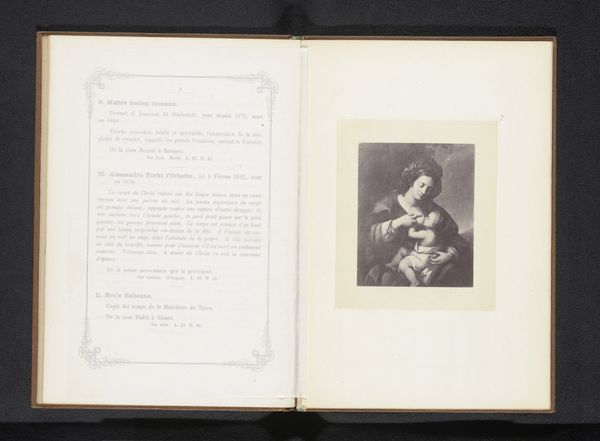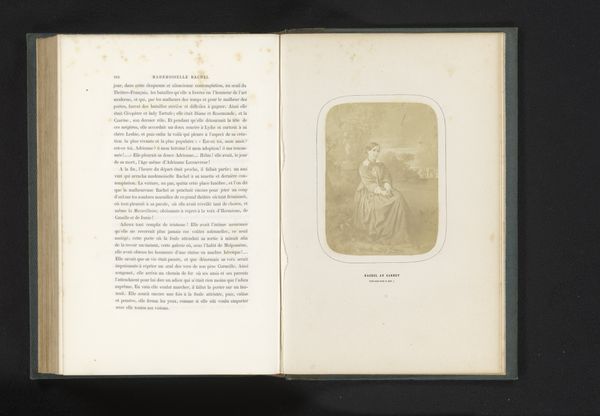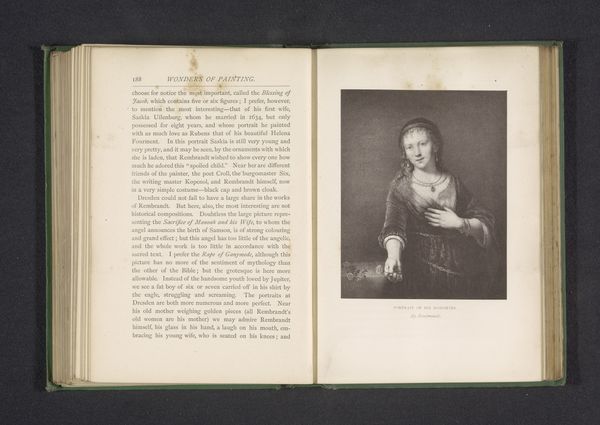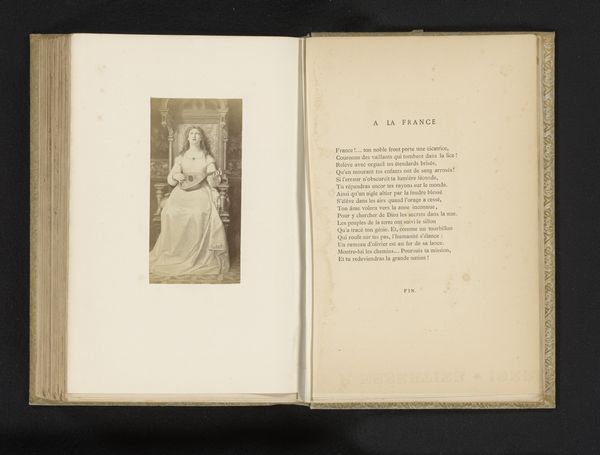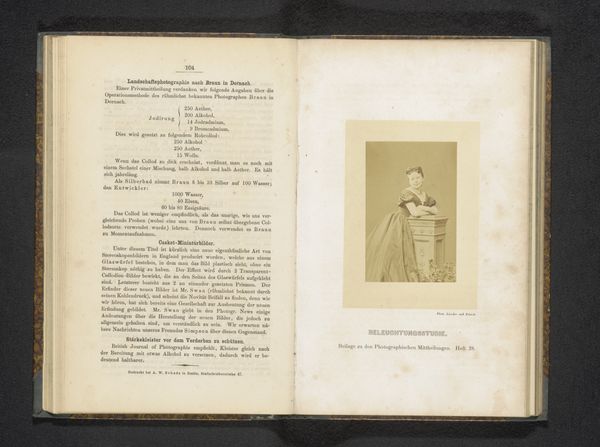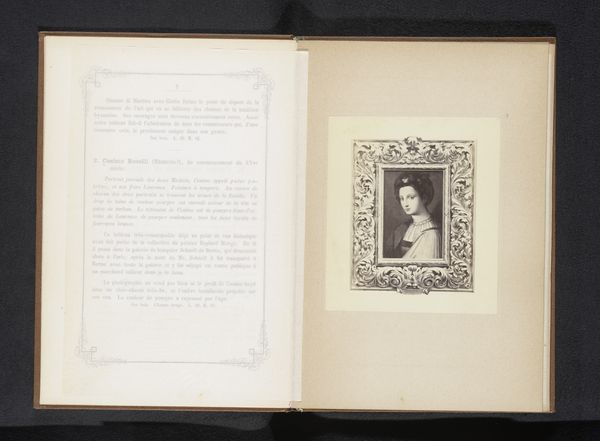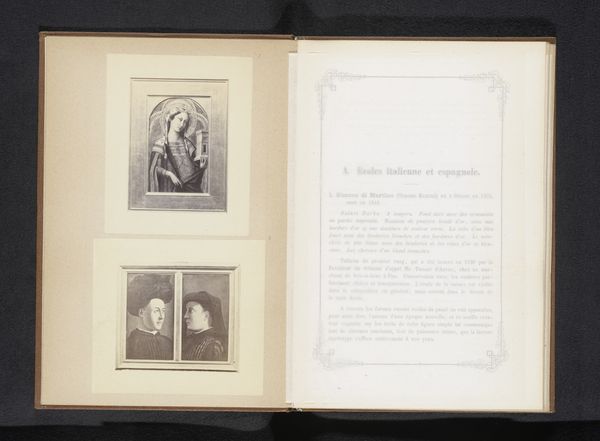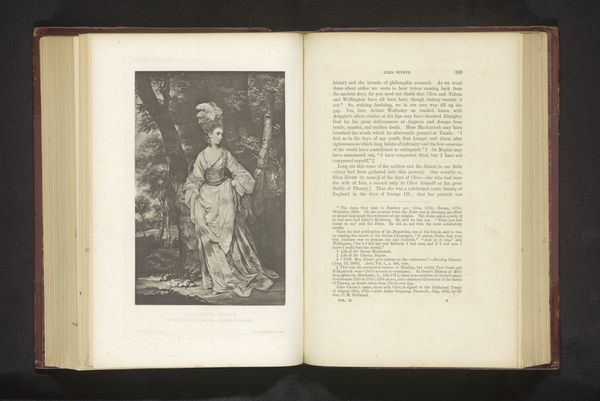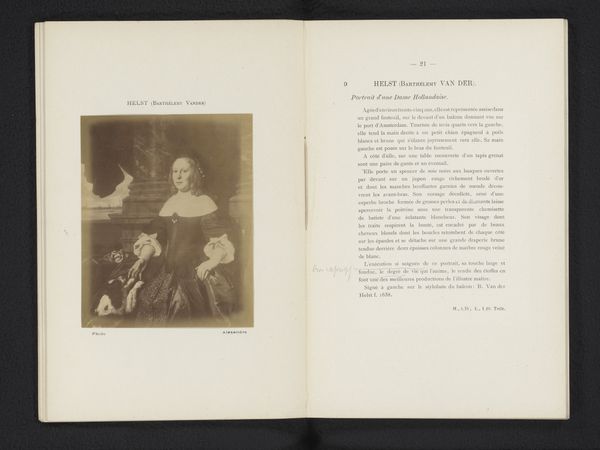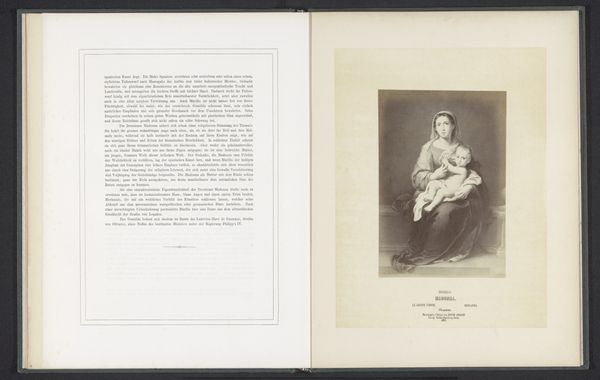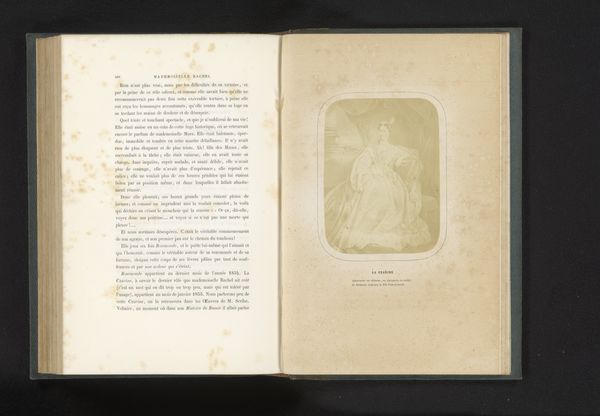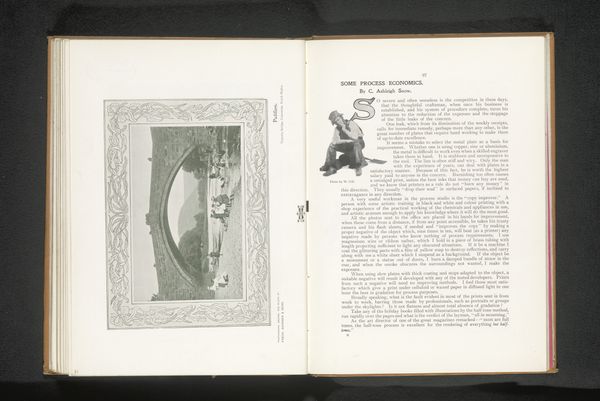
Fotoreproductie van een schilderij van kardinaal Pierre de Luxembourg before 1880
0:00
0:00
print, photography
#
portrait
# print
#
11_renaissance
#
photography
#
history-painting
Dimensions: height 164 mm, width 114 mm
Copyright: Rijks Museum: Open Domain
Curator: This fascinating photographic reproduction presents a portrait of Cardinal Pierre de Luxembourg. It’s likely sourced from before 1880, judging from its style and printing process. Editor: It feels very reverential, doesn't it? There’s an undeniable stillness in the image. It almost looks like he’s floating amidst the textured background. What symbolic weight would a figure like him carry? Curator: Absolutely. Think about the context. As a Cardinal, Pierre de Luxembourg was a very powerful figure. Now, a reproduction like this helps maintain that authority, reinforcing specific social structures and ecclesiastical institutions. It’s about preserving a particular memory of power, I think. Editor: The headdress is a compelling symbol, as well as his clothing. But how much of his perceived persona relies on symbolic adornments over inherent spiritual presence? Does the attire create the aura, or does it amplify something already there? Curator: Good point! These images were consciously constructed. So many portraits, even when depicting figures with supposedly spiritual connections, became highly politicized—art serving as propaganda in some ways, subtly reinforcing hierarchy. Editor: Yet, the presence of a coat of arms creates a lineage through symbolic representation. Family crests become vital links to identity that give meaning and permanence to status, beyond merely religious or political influence. It’s fascinating how families tried to visually secure themselves in cultural memory. Curator: I agree completely! And the photographic element makes it so widely accessible. So, through photography, that message of established authority goes to new segments of the public. The image functions almost like a proto-mass media tool. Editor: Seeing the symbolism through the lens of history helps reanimate an image that might otherwise be a simple portrait. The weight of representation becomes much clearer. Curator: It definitely adds layers of interpretation! I think this reproduction underscores how imagery functions within larger networks of power, belief, and social practice. Editor: Ultimately, examining these visual cues allows us to decipher meaning and unpack cultural significance encoded in an individual and their broader community.
Comments
No comments
Be the first to comment and join the conversation on the ultimate creative platform.

